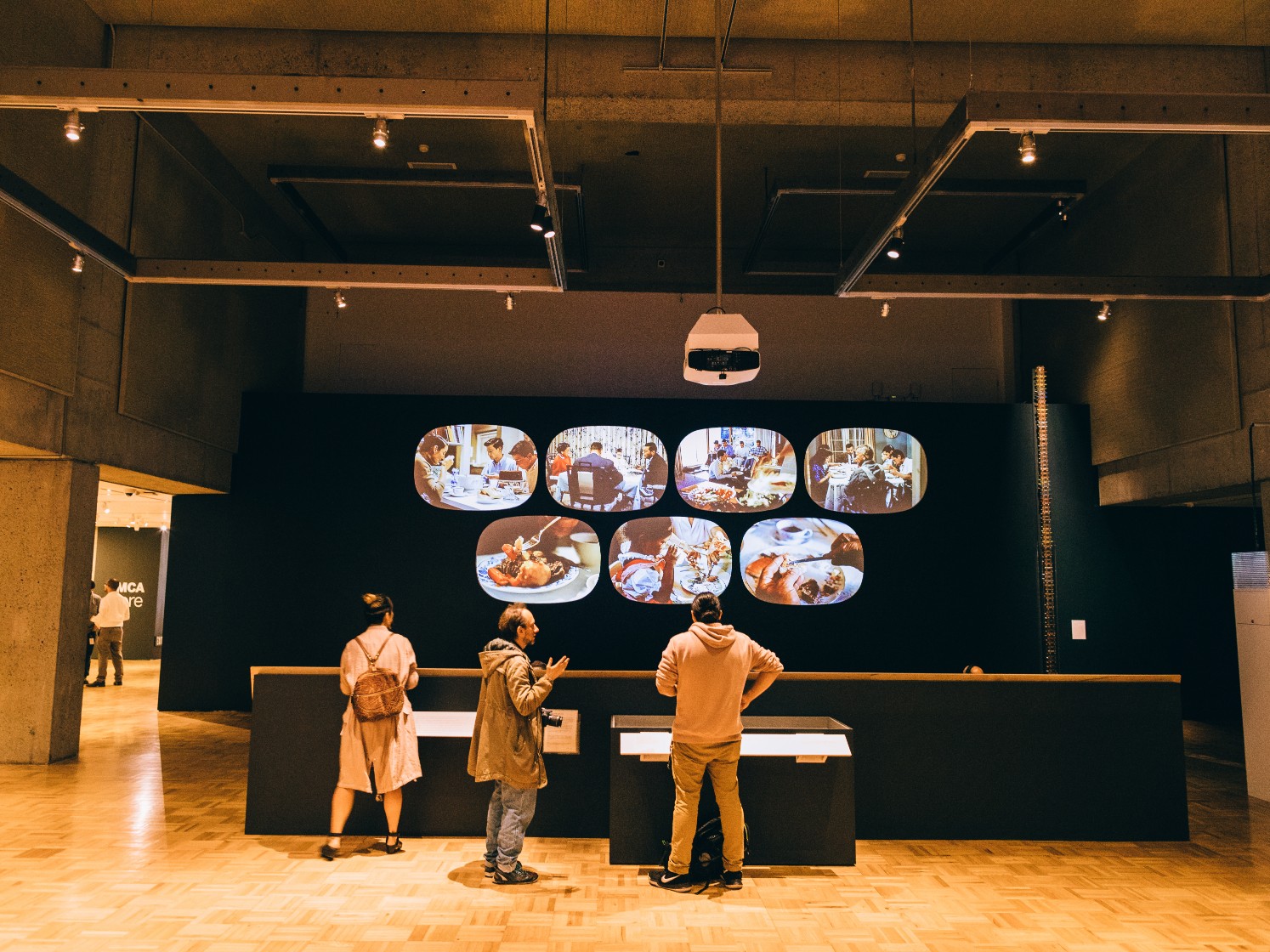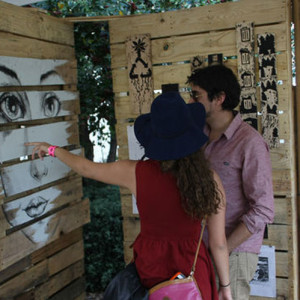Beginning in London, the adored and lauded three-year tour of The World of Charles and Ray Eames presents its west coast premier and grand finale at the Oakland Museum of California with never before seen work, emphasizing the magic of the iconic couple’s relationship.

(Courtesy of OMCA)

Fiberglass chair shells manufactured by Herman Miller Furniture Company circa 1959-1968. These were originally available in three colors—greige, elephant-hide grey, and parchment. By 1963, there were 16 different contract colors, with the range continuing to expand with demand. Shown here are test color samples as well as hues that were offered in production. (Sothear Nuon)
As two of the most influential designers of the 20th century, there’s no putting into words the impact the Eames have had on design. Perhaps most well-adored is their lounge chair which has resurfaced in a throwback mid century moment, but there is so much more to the legacy of Eames—complex as any relationship with a myriad of elements spanning multiple mediums. It is their love as much as their ardor for their work that shines through. From letters to the exploration of materials, their melding of creativity, joy, and play permeates every facet, and it’s in this context that their work can best be experienced.

Erin Fong and Alexandra Bigley sit and spin in Magis Spun Chairs by Thomas Heatherwick as the Eames Tops film plays in the background. (Sothear Nuon)

Erin Fong in one of the many kaleidoscopes. (Sothear Nuon)
Numerous threads tie together the careers of Charles (1907–1978) and Ray (1912–1988), restored and brought together in conjunction with the Eames family and the Library of Congress an impressive collection. The exhibit spans more than 380 works including multimedia installations, intimate photographs, and rare prototypes in a sprawling display of their work in various forms including furniture design, architecture, industrial design, and manufacturing.
“The real questions are: Does it solve a problem? Is it serviceable? How is it going to look in ten years?” —Charles Eames

A collection of chairs including the Lounge Chair and Ottoman, Chase prototype no 2, and Aluminum Group Armchair. (Sothear Nuon)

Eames House of Cards. (Sothear Nuon)
“This show is why we do what we do,” says Eames Demetrios, director of the Eames office. “There is a seamless connection between all the different worlds that Charles and Ray approached. As beautiful as the objects that you see are, the ideas behind them are just as beautiful.”

Molded plywood lounge chairs and elephant. (Jen Woo)

1:50 scale model of Case Study House No. 8. (Sothear Nuon)
He goes on to share one of his favorite philosophies from duo—the role of the designer was that of a good host anticipating the needs of the guest. The exhibit is set up in much of the same way in four thematic sections starting with the origin story of the couple, emphasizing California as their source of inspiration—where the two moved to after marrying in 1941. Here, viewers can take in their sense of early experimentation and problem-solving through landmark commissions. The state provided them with a place to innovate, where their work has become intertwined with Californian culture.
“Notice the uncommon beauty of beautiful things.” —Charles Eames

Dining Table Metal and Dining Chair Metal along with photoshoot of Eames furniture and drawing by Saul Steinberg at 901. (Sothear Nuon)
The second section explores the ideas behind their designs with models and recreations of objects displayed at public exhibitions and world fairs. A row of Eames lounge chairs invite visitors to sit down and relax while taking in a large-scale representation of the multi-screen film installation Glimpses USA. Examples of commissioned installations for corporate and government clients including IBM—pre-mainstream computer culture—are also on show.

Erin Fong and Alexandra Bigley take a moment to relax in the row of Eames Lounge Chairs. (Sothear Nuon)

Scenes from Eames Glimpses USA (Sothear Nuon)
Multimedia projects and ongoing work including furniture, branding, and design make up the third section, which can be experienced through immersive experiences in film and audio stations. Their personal and professional lives meld here with “play as a form of self-discovery.” Much of the footage played on the walls of their offices, which their grandchildren watched growing up, explains Demetrios. The Eameses also collected toys and cultural artifacts, many of which were included in displays at Herman Miller showrooms.

Eames snapshot station. (Sothear Nuon)

The Aluminum Group was made up of affordable, structural tables and chairs. (Sothear Nuon)
The duo pioneered the ability to think in multiple viewpoints and paved the way for the future of communication, as reflected in the final portion of the exhibit. Displayed here are sample lessons and multimedia videos, transforming complex ideas in digestible media. Visitors can watch the Powers of Ten film, one of the Eameses’ best-known films, which delves into how we comprehend and process information in the changing world around us.
“Look at things as though for the first time.” —Charles Eames

Think plays on the screen, a multi-screen film presentation shown on 15 of the theater’s 22 screens for IBM’s The Information Machine. (Sothear Nuon)

Visitors watch Powers of Ten: a film dealing with the relative size of things in the universe, and the effect of adding another zero. (Sothear Nuon)
The Eameses were trailblazers, seeing, shifting, and creating in a fashion that was far beyond their time. They embraced the potential of technology, changing the landscape of communication; they formulated designs as solutions, but also just for fun, ultimately changing the way we think about and process our surroundings and experiences. Their story is intricate, and it takes seeing the combination of all of their forms, the full scope of their inner workings, to truly understand the marvel that is this husband and wife design duo.

Untitled molded plywood. Between 1941 and 1943, the Eames began a series of sculptural experiments, pushing the boundaries of the compound. (Jen Woo)

A piece from the American National Exhibition where products and tech were staged in Moscow’s Sokolniki Park. (Jen Woo)











Leave a reply